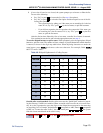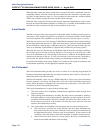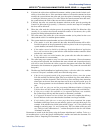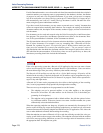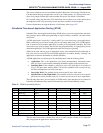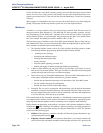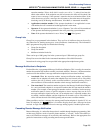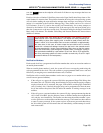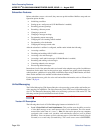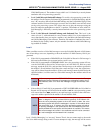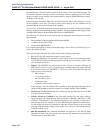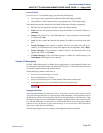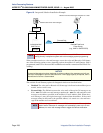
Voice Processing Features
INTER-TEL
®
CS-5200/5400 ADMINISTRATOR GUIDE, ISSUE 1.1 – August 2005
Group Lists
Page 281
extension number (“Please hold while I transfer your call to...”), unless it has been dis-
abled at the mailbox. If the endpoint user does not answer, the caller will be asked if he
wants to leave a message, if the operator’s extension has an associated mailbox. If the
caller chooses not to leave a message, the call returns to the main menu of the applica-
tion being used (Call Routing Announcement, Voice Mail, or Automated Attendant).
• Application extension number: If the operator destination is an application’s exten-
sion number, the call is transferred to that application’s main menu.
• Operator: If the operator destination is set to “Operator,” the caller will be transferred
to the operator destination programmed in the voice processing system database.
• None: If the operator destination is set to “None,” the will be ignored.
Group Lists
Group lists are programmed in the database. They are lists of mailboxes that can be used by
any Subscriber for sending messages to several mailboxes simultaneously. The information
that is programmed for group lists include the following:
• Group list description
• Group list number
• Mailboxes included in the list
There can be up to 1000 group lists in the system and up to 1500 entries per group list.
Group Lists are not included in the Automated Attendant or Voice Mail directories.
Instructions for using group lists are provided in the appropriate endpoint user guides.
Message Notification to Endpoints
Each mailbox has a programmed Message Notification Endpoint. This is usually the extension
number that matches the mailbox number (associated mailbox). However, a different number
can be used for the mailbox’s message notification endpoint (non-associated mailbox).
• Associated: When the extension number, message notification number, and mailbox
number for an endpoint all match, that endpoint user can forward calls to Voice Mail
and have the call go directly to the associated mailbox’s personal greeting. (Even if
other mailboxes use that extension number as their message notification extension.)
• Non-Associated: The extension number assigned as the Message Notification Endpoint
for a non-associated endpoint is an extension number that does not match the mailbox
number. (For example, a hunt group pilot number can have a mailbox, but the message
notification must be sent to a specific endpoint so that a message lamp can be lit or
message notification signal can be sent.) If an endpoint user’s extension number does
not match a mailbox number, and the endpoint user forwards calls to Voice Mail, the
caller will hear the main Voice Mail greeting and must enter a mailbox number.
When a mailbox receives a message, the message notification endpoint is signaled. If it is an
Inter-Tel endpoint, the button is lit and the display shows that a message has been
received. A single line endpoint will receive message waiting signals, if enabled system-wide.
Cascading Remote Message Notification
Remote Messaging is a subscriber feature that is enabled through database programming. Sub-
scribers may program a series of specific phone numbers, a “cascade,” for the Voice Mail sys-
tem to call when new messages are received by their mailboxes. Refer to the appropriate user
guides for instructions on using cascading remote message notification.
0
MSG



